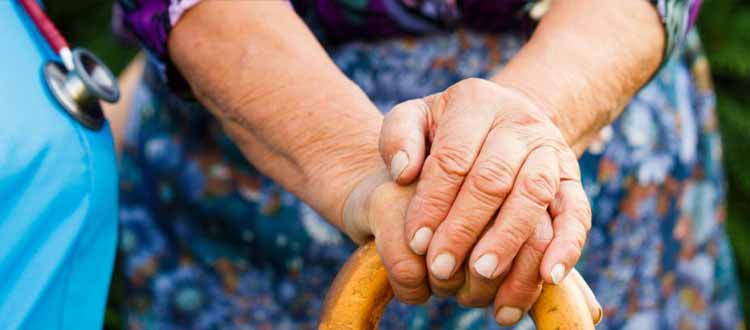Parkinson’s Disease
Parkinson’s disease is a progressive nervous system disorder that affects movement. Symptoms start gradually, sometimes starting with a barely noticeable tremor in just one hand. Tremors are common, but the disorder also commonly causes stiffness or slowing of movement. In the early stages of Parkinson’s disease, your face may show little or no expression. Your arms may not swing when you walk. Your speech may become soft or slurred. Parkinson’s disease symptoms worsen as your condition progresses over time. In an area of your brain called the substantia nigra, cells that make the chemical dopamine start to die. Dopamine has an important job to do. It acts like a messenger that tells another area of your brain when you want to move a part of your body. When the cells that make dopamine start to deteriorate and then die, your dopamine level drops. When it gets too low, you can’t control your movements as well and you start to get Parkinson’s symptoms.
Parkinson’s disease signs and symptoms can be different for everyone. Early signs may be mild and go unnoticed. Symptoms often begin on one side of your body and usually remain worse on that side, even after symptoms begin to affect both sides. In Parkinson’s disease, certain nerve cells (neurons) in the brain gradually break down or die. Many of the symptoms are due to a loss of neurons that produce a chemical messenger in your brain called dopamine. When dopamine levels decrease, it causes abnormal brain activity, leading to symptoms of Parkinson’s disease. Risk factors for Parkinson’s disease include Age (usually develop in older people of more than 60 years of age), Heredity (Close relative with Parkinson’s disease), sex (more likely to occur in males) and exposure to toxins (herbicides and pesticides). Conventionally, there was no cure available for Parkinson’s. Until recently people have been unaware with the existence of such kind of a disease, which alters your muscular movement as well affects some of the non-motor functions such as a sense of smell or the sleep regulation, etc.
Medications can only help in relieving the symptoms of the disease and for certain cases, surgery is done to regulate certain regions of your brain and improve your symptoms. In the stem cell treatment for Parkinson’s disease, the focus remains on injecting the best quality of Mesenchymal stem cells via intrathecal or spinal injection for better healing and regeneration of these dopamine-producing nerve cells. In bone marrow, the stem cells are extracted from hip bone or iliac crest after general anesthesia and in adipose tissue, the extraction is done from belly area with local anesthesia. This Mesenchymal stem cell is the multipotent stem cells and these cells provide the best regeneration of all type of nerve cells and all other neurological disorder.
Post-treatment, the patient is asked to visit the doctor after a specific period of time for some rehabilitation programs, including analysis of the recovery of motor, sensory and bodily functions of the patients as this stem cell treatment take 4-6 months time to improve all clinical changes. The current stem cell treatment benefits are already well documented like speeding up healing time, lowering chronic pain, reducing the need for medications, increasing functionality, decreasing nerve damage and improving collagen concentrations and it is expected that continued research will pave the way for new treatments. Stem cell therapy in India is a miraculous ray of hope for those suffering from serious diseases, as it can help in the reversal of the disease. Treatment for Parkinson in India- Parkinson’s disease treatment is possible by stem cell supplements and this technology is showing promising results. Know more about the Parkinson disease treatment by stem cells. If you are in search for best stem cell treatment in India, then you have visited right platform an that has to be stem cell cure. A single stop for all your medical issues.

